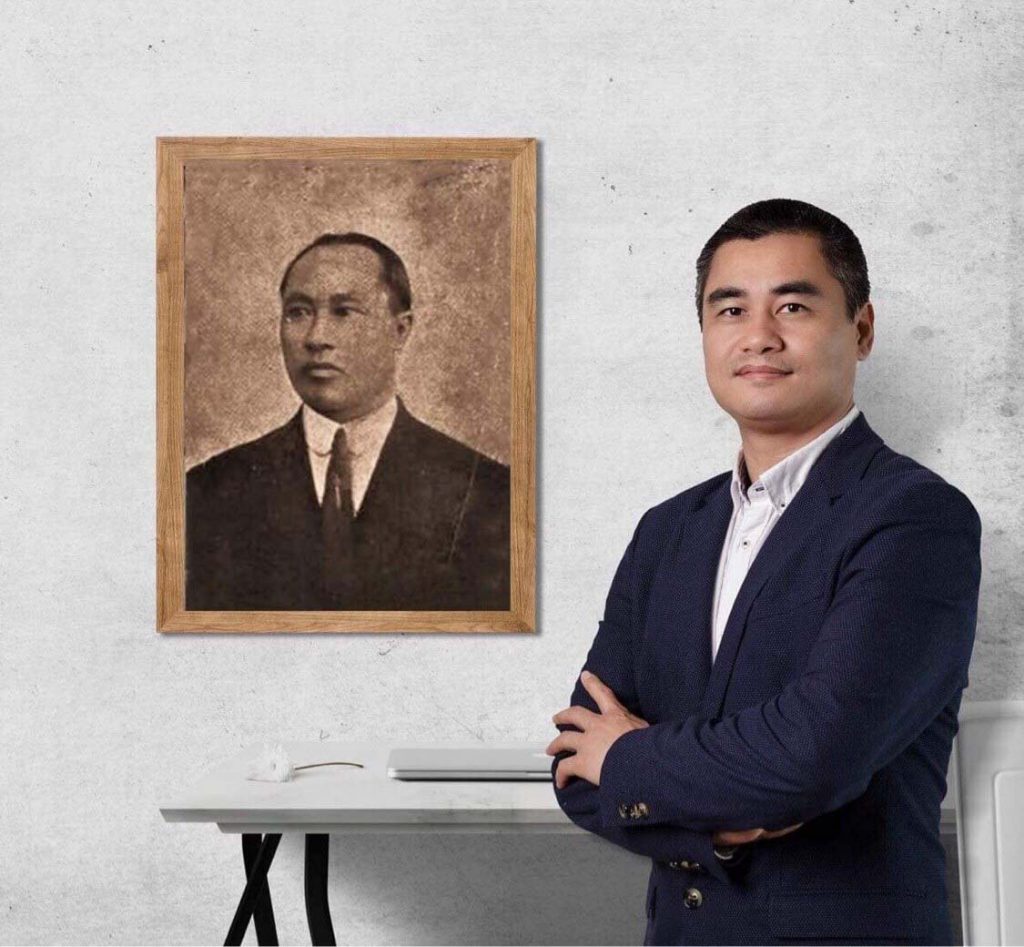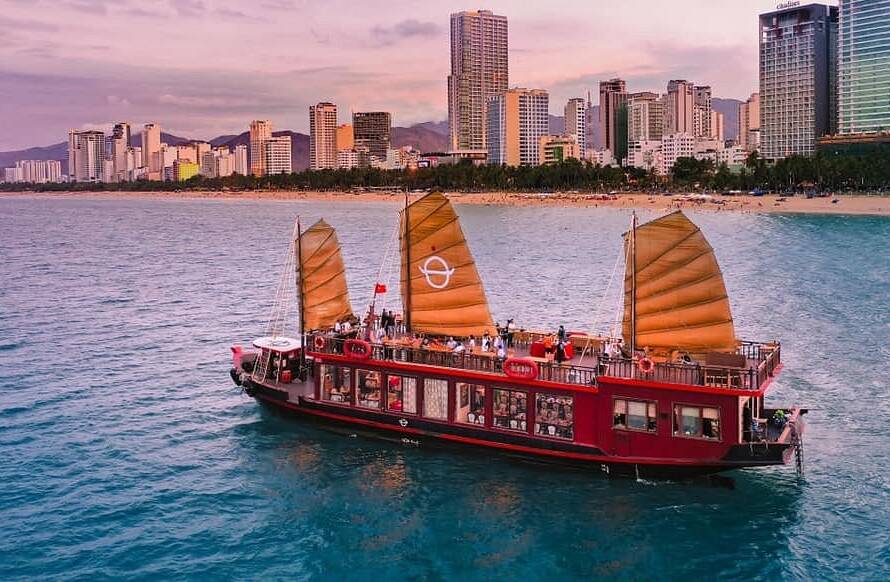
The Early Journey of Vietnamese National Bourgeoisie
The Vietnamese national bourgeoisie began to take shape during the late 19th century and continued its development until 1918. This period marked the initial stages of their history, during which they demonstrated a growing sense of national identity through tangible actions.
Formation
In the late 19th century, the French colonialists officially began exploiting Vietnam for its resources and labor force. While this exploitation led to significant economic changes, it also brought about the emergence of the Vietnamese national bourgeoisie. Agriculture witnessed substantial transformations with the establishment of plantations and irrigation projects, particularly in the Southern and Northern regions.
Industrial sectors like mining, mechanical engineering, construction materials, and the processing of agricultural and marine products began to take shape. Industrial zones emerged, along with industrial cities like Hai Phong, Da Nang, Saigon, and Vinh-Ben Thuy. By 1906, there were approximately 200 French-owned factories in the country, and notably, several Vietnamese-owned factories.
Saigon alone boasted 20 milling factories, and Vietnamese bourgeoisie established companies such as Quang Nam United Company, Quang Hung Long, Dong Thanh Xuong, Bach Thai Buoi, and many others. After World War I, industrial sectors continued to flourish, including those owned by the Vietnamese bourgeoisie.
Modern infrastructure and transportation systems like railways, roads, waterways, and aviation provided a foundation for industrialization and urbanization. The use of the Latin script (Quốc Ngữ) replaced the traditional Chinese script (Chữ Hán), and the outdated Confucian education system was replaced with a modern Western-oriented one.
Political and Social Changes
Economic changes, especially in the political sphere, had a profound impact on Vietnamese society, resulting in the emergence of new social classes. The working class grew rapidly in both quantity and quality, and the urban petite bourgeoisie also flourished. By 1913, there were nearly 97,976 Vietnamese students and teachers. After World War I, the number of students in primary schools reached 68,000. In rural areas, besides the traditional classes of farmers and landlords, a new class, the rich peasants, emerged, representing the traditional economic base.
Notably, during the early 20th century, alongside French capitalists, Vietnamese national bourgeoisie began to appear. With the development of the colonial economy and the aftermath of World War I, the Vietnamese bourgeoisie officially formed and grew rapidly.
The Vietnamese national bourgeoisie emerged after the indigenous working class because they lacked economic foundations beforehand. Their origins were primarily as traders, some as landlords, especially in Southern Vietnam, specializing in subcontracting or acting as agents for the French. Only a few had backgrounds as small business owners.
Before World War I, some business activities of the Vietnamese bourgeoisie included Quang Hung Long Company, Quang Hop Ich (Northern Vietnam), Phuong Lau Company (Thanh Hoa), Quang Nam United Company (Quang Nam), and Lien Thanh Company (Phan Thiet), among others.
After World War I, the business activities of the Vietnamese bourgeoisie expanded into various industries and larger scales, from milling, printing, dyeing, and transportation to mechanical repairs, as well as the production of paint, soap, sugar, fish sauce, pottery, and more. During this time, the Vietnamese bourgeoisie diversified into two primary groups: the commercial bourgeoisie and the national bourgeoisie.
The commercial bourgeoisie, especially with French capital investment, grew rapidly. Large-scale companies like Tri Phu Company, Que Duong in Hai Phong, Dan Phong in Hanoi, and Thuan Hoa in Cholon began to emerge. These commercial bourgeoisie specialized in subcontracting for public works and construction, and their numbers increased significantly.
In Northern Vietnam from 1923 to 1927, 449 subcontractors received 4 million francs to build public works. Some Vietnamese bourgeoisie even engaged in trade with neighboring countries and France. These trading companies annually imported 3,000 to 7,000 tons of goods while also exporting various Vietnamese products such as silk, embroidery, ironware, tea, sugar, contributing to the stimulation of Vietnamese production.
The national bourgeoisie group made significant progress after World War I, both in terms of quantity and economic influence. Many economic establishments that existed before the war continued to develop, expanding their production scale and adopting modern technical equipment.
Examples include Nguyen Son Ha’s paint workshop, Bach Thai Buoi’s shipbuilding workshop, and Le Phat Vinh’s weaving workshop. Additionally, many new production facilities were established, like the Hung Ky Cotton Factory in Bac Ninh, the Vinh An Weaving Company in Hue, and the power company owned by Le Phat and Phan Tung Long in Southern Vietnam.
Vietnamese bourgeoisie and landowners also contributed capital to establish the Bank of Vietnam. Numerous plantations covering hundreds of hectares, attracting hundreds of Vietnamese bourgeoisie workers, appeared. Some even held shares in the Indochina Rubber Group.
However, overall, the Vietnamese bourgeoisie developed slowly due to constant pressure from French and Chinese capitalists. Furthermore, being newly formed, the Vietnamese bourgeoisie still adhered to the economic ideology of feudal production, which hindered its rapid development.
National Consciousness of the Vietnamese National Bourgeoisie in the Early Stage
After their formation, the Vietnamese national bourgeoisie quickly identified their class nature and responsibility to the nation. They recognized their difficulties in the context of being oppressed by foreign capitalists.
To improve their economic situation and resist foreign capitalist oppression, the Vietnamese bourgeoisie early on established associations and organizations to protect their interests.
The national bourgeoisie encouraged and motivated the Vietnamese people to engage in business, promote capitalist economic development, and rally the people to use domestic goods to encourage national economic development. Figures like Bach Thai Buoi not only pioneered in organizing maritime transport and shipbuilding but also became famous for the slogan “Vietnamese people ride Vietnamese ships” in the trade war with French and Chinese capitalists.
Moreover, he named his ships after national heroes such as Dinh Tien Hoang, Lac Long, Trung Trac, Le Loi, Ham Nghi, and more. The Vietnamese bourgeoisie also established Vietnamese chambers of commerce. Following the boycott of “khách trú – French and Chinese capitalists” in 1919, they participated in the struggle against the monopoly of the Saigon port in 1923.
The Vietnamese national bourgeoisie also fought to participate in the colonial government machinery, such as the Council of County Management, the Assembly of Deputies, and advocated for their interests in these institutions.
In terms of culture and thought, the Vietnamese bourgeoisie established newspapers to promote their new business approach and political views. These newspapers contributed to fostering the spirit of patriotism and national consciousness not only among the bourgeoisie but also among the general public. Notable publications included “Thuc Nghiep Dan Bao” (1912) by Nguyen Huu Thu and Bui Huy Tin, as well as “Khai Hoa” (1921) by Bach Thai Buoi…
The spirit of patriotism and national consciousness became admirable qualities of the Vietnamese national bourgeoisie, continuing to shine and accompany the nation throughout its history for over a century. Figures like Bach Thai Buoi and Nguyen Son Ha continue to inspire and stand alongside the people.
By Researcher Pham Ha



